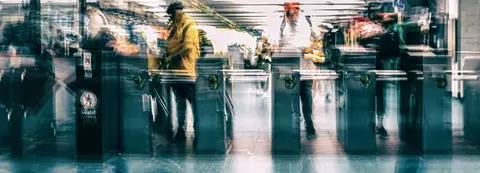What is MaaS and why is it needed?
MaaS is a combination of public and private transportation services that allows users to plan their trips across modes and pay for them in one charge while building toward fulfillment of a key public equity objective. This puts users at the center of the experience and eases the use of multi-modal transportation options.
Mobility as a Service (MaaS) is reshaping the way people use transit and technology as well as how governments plan to meet regional public goals, including meeting public equity objectives.
A MaaS Business model, such as Whim or CityMapper mobility subscription services, aims to give members a suite of services for a flat monthly fee. That’s what sets it apart from a MaaS Operational model, which is a set of technologies that enables coordinated transportation services in support of regional public goals such as equity, congestion management, and environmental concerns. We will likely see multiple varieties of both models within a given market.
There’s much debate going on about congestion pricing, as governments look for ways to distribute the costs of utilizing infrastructure more fairly among its users. MaaS is an opportunity to make personal mobility an elegant user experience while addressing the public good.
What are the benefits of MaaS for users, the general public and tolling authorities?
I have heard public transportation described as moving people from a place they don’t want to be to a place they don’t want to go. Like so many other long-standing institutions, disruption in public transportation was inevitable, enabled by advances in technology and through new entrants in service provision from the private sector. This creates a better opportunity to move people from where they are to where they want to be through a multi-modal combination of public and private services that are highly tailored to individual preferences.
That means every aspect of the mobility chain can be integrated into a singular experience for the user. By removing friction for the traveler, they are more likely to use the new value chain. That action creates complexity on the back-end for operators and means that all providers have a new opportunity to create value for their customers through integration.
Tolling will be more relevant than ever, especially as a tool for managing congestion, and perhaps even charging to incentivize specific behaviors in support of regional policy.
MaaS will reshape the future of transit -- making it a seamless experience.
How will MaaS evolve?
MaaS is not something you buy or sell. MaaS is a framework that enables technologies to layer on top of each other to work toward a regional public goal. That means that the public sector should lead the identification of the policies that must be addressed so both the public and private sector can build technologies that align with those needs.
Government must take the lead in designing MaaS solutions for the region so that the private sector does not get too far ahead of the public good. MaaS is not one-size-fits-all. Since it is a framework, it will be built starting with the existing regional technologies, and each goal of what “great” looks like will likely be different.
For instance, a suburban environment may not have the same density goals as a large municipality, but many of their residents likely commute to or from the city. MaaS would enable the city to establish new congestion pricing zones to alter travel behavior during peak periods.
In contrast, rural travelers would only be responsible for their fair share of the costs, and quality of life will improve as residents are more connected to healthcare and other services because of new mobility options. City dwellers can eventually forgo car ownership in favor of a fractional model through access to vehicles as needed for weekend adventures, without the same burden of depreciation.
Fundamentally, MaaS is about improving access for all types of travel. In each of those cases, the end goal by the local government is different, and yet they would all qualify as a MaaS approach to maximizing the public good. While subscription business models for MaaS already exist, it is only one approach to integrating into a region’s overall MaaS operational model. The same goes for Mobility on Demand, which is the commodification of mobility services. At its peak, MaaS will ingest many business models including those of tolling, parking and shared services in the attainment of a broad goal. Each of those businesses will still exist as stand-alone entities but will also become part of a larger consumption model.
MaaS would enable the city to establish new congestion pricing zones to alter travel behavior during peak periods.
What are examples of MaaS implementation?
We are in the formation stage of MaaS. Those that have been part of this shift since the beginning started these conversations just a few years ago at conferences and academic events describing what it might look like, and if it is achievable. At this point, we are past the question of “if” and have moved to “when.”
There are pilots going on all around the world that are levels of this integration that connects multiple forms of mobility to enable end-to-end journeys through a single charge. For example, in Los Angeles, the TAP card is integrating with a variety of microtransit operators, and there are plans to continue building toward the city’s MaaS vision.
Cubic’s partnership with Transport for London (TfL) was one of the earliest adoptions of this approach for ingesting services to meet the needs of the traveling public. In that case, you can use your TfL Oyster card throughout the system, as well as for the Clipper Ferry system, which is operated by a private provider. In each of these cases, a public-sector actor working to attain a specific public goal implemented the use of multiple technologies to deliver an enhanced user experience.
As these pilots continue and we learn best practices, the industry can move toward adopting common approaches to integration. This will require openness and trust in both providers and the public. It is an entirely new approach, and frankly, one that is going to transform the movement of people, goods, and services.
How will the public know when they have shifted to MaaS?
I think when we are doing it right they won’t know they shifted at all. Right now, I don’t believe the average user thinks “I’m going to take a light rail vehicle to work but a paratransit vehicle to my doctor’s appointment." They simply know how to get from where they are to where they need to be.
The words we use matter.
The industry must develop a common language so we can tailor our solutions across regions and ideally create interoperable experiences. The public may never know what Mobility as a Service is, and that is probably fine. In the end, creating the future of mobility will depend on setting aside ego in favor of the wonderful opportunity that will come from multiple players acting together to build a smarter, healthier, more connected community.
Follow the conversation with us on Twitter using #MaaS.
Crissy Ditmore is the Director of Strategy for Cubic Transportation Systems, the worldwide leader in the provision of transportation technologies. As part of Cubic’s Strategy team Crissy works on the expansion of Mobility as a Service across the globe. With 12+ years’ experience in the mobility industry she continues to assist urban, suburban, and rural development of sustainable futures for complex mobility needs. Crissy has a Masters in Project Management, is Chair of the Board or the TravelSpirit Foundation North America and is active with the Coalition for Smarter Transportation.




